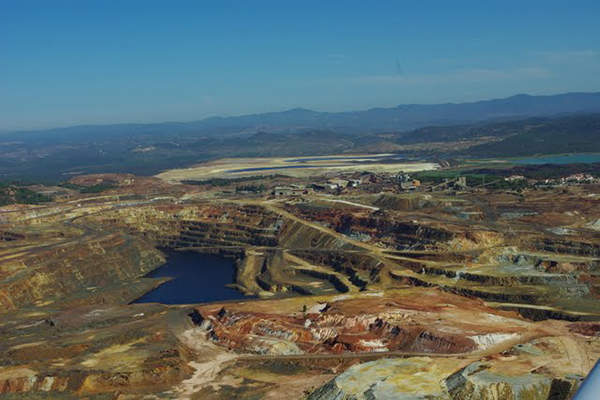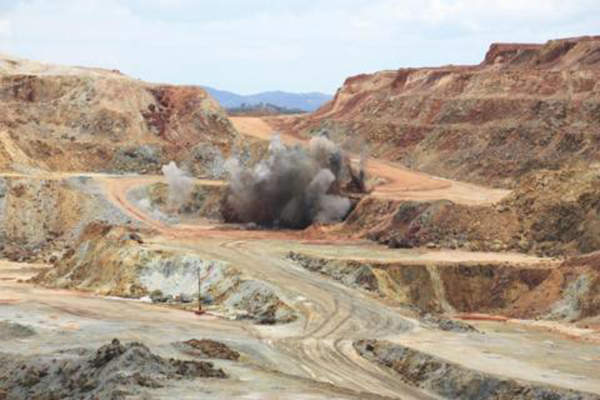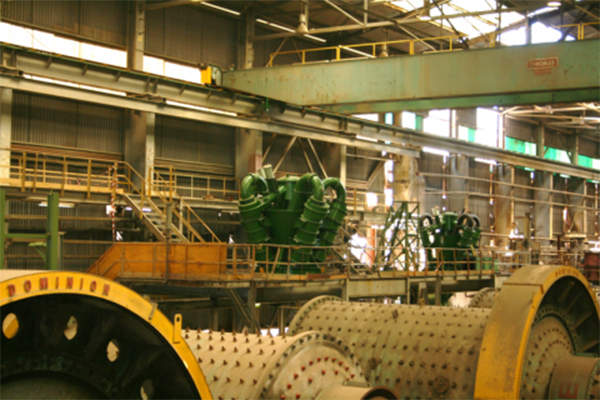
Through its fully owned subsidiary EMED Tartessus, EMED Mining owns the Rio Tinto copper mine (Proyecto Rio Tinto), which has been placed under care and maintenance since 2000 due to low copper prices. The mine is located in the Iberian Pyrite Belt, approximately 65km north-west of Seville, Spain.
EMED Mining is working to reopen the mine in 2015. The Minas de Riotinto Municipality granted the activity licence for the project in July 2015, which enables the start of mining activities. First blast at the mine was performed on 17 April 2015 and commercial production is anticipated to begin in the third quarter of 2015.
The processing plant at the mine is expected to process nine million tonnes (Mt) of ore a year through its mine life of 14 years. The project is estimated to produce approximately 37,000t of copper in concentrate form a year, as well as create approximately between 400 and 450 jobs.
Development stages proposed for the restarting Rio Tinto copper mine
The copper project is proposed to be developed in two stages, with the first stage involving the processing of five million tonnes per annum (Mtpa) of ore. The throughput rate of the processing plant is expected to be increased to 9Mtpa under the second phase.
Rio Tinto copper mine details, location, geology and mineralisation
The historical Rio Tinto copper mine is situated within the world’s biggest volcanogenic massive sulphide (VMS) system. It operated continuously between 1873 and 2001, producing approximately 1.7Mt of copper, 3.3 million ounces (Moz) of gold and 54Moz of silver.
The deposit is spread across approximately 2,224ha on the eastern end of the Iberian pyrite belt, which extends approximately 230km between Seville in the east and the Atlantic coast near Lisbon in the west.
The volcanic-hosted pyrite mineralisation is stratigraphically related to the felsic pyroclastic rocks. The sulphide mineralisation is attributed to submarine volcanic activity that resulted in the formation of a number of near-vertical brecciated feeder pipes comprising small veins of sulphides.
Initial ore will be sourced from the Cerro Colorado pit, followed by the San Dionisio and San Antonio mines. The deposit consists of one of the world’s biggest known concentrations of sulphides.
Rio Tinto copper mine reserves
The open pit mine is estimated to contain proven and probable ore reserves of 123Mt grading 0.49% copper and containing 606,000t of copper.
Mining and processing of ore from Proyecto Rio Tinto
Drilling and blasting followed by load and haul will be used at the proposed Cerro Colorado open-pit.
The ore will be crushed in a three-stage crushing unit and milled in three milling trains comprising a rod mill driven by 1,840kW electric motor and three ball mills. The slurry discharge will be pumped to cyclone clusters, the underflow of which will gravitate to ball mills while the overflow will pass to the rougher-flotation-cell slurry distributor.
The Kamoa Copper Project is situated in the Kolwezi District, Katanga, Democratic Republic of the Congo (DRC).
The rougher concentrate from the flotation cells will be reground in two regrind balls, operating in closed-circuit with hydro-cyclone clusters. The overflow will be cleaned in three-stage cleaner cells and the resultant concentrate will be delivered to concentrate thickeners.
The underflow from the thickeners will be dewatered by two pressure filters, and the resulting filter cake will be conveyed to the final concentrate storage shed. The final concentrate will be loaded onto trucks and transported to Huelva for smelting and export, which is located approximately 75km from the plant site.
Financing of EMED’s copper mine in Spain
Trafigura Beheer, Orion Mine Finance Fund and Hong Kong Xiangguang, an affiliate of Yanggu Xiangguang Copper, are providing $30m for the Rio Tinto copper mine development through an unsecured bridge finance facility.
In June 2014, the government of Andalucía awarded a €8.8m grant to EMED Tartessus for modernising the copper mine facilities.
EMED Mining engaged Goldman Sachs International to provide and/or arrange up to $175m in finance for the restart of the mine.
Infrastructure facilities at the Rio Tinto copper mine
Power is proposed to be supplied from the ENDESA substation, which is located approximately 1km from the plant substation.
Water will be primarily sourced from within the mine site reticulation system, while additional freshwater will be collected from the Campofrio reservoir and the nearby Aguas Limpias water dam.
Key players involved
Behre Dolbear International conducted the NI 43-101 technical report for the copper project, while AMC prepared the mine restart plan.










